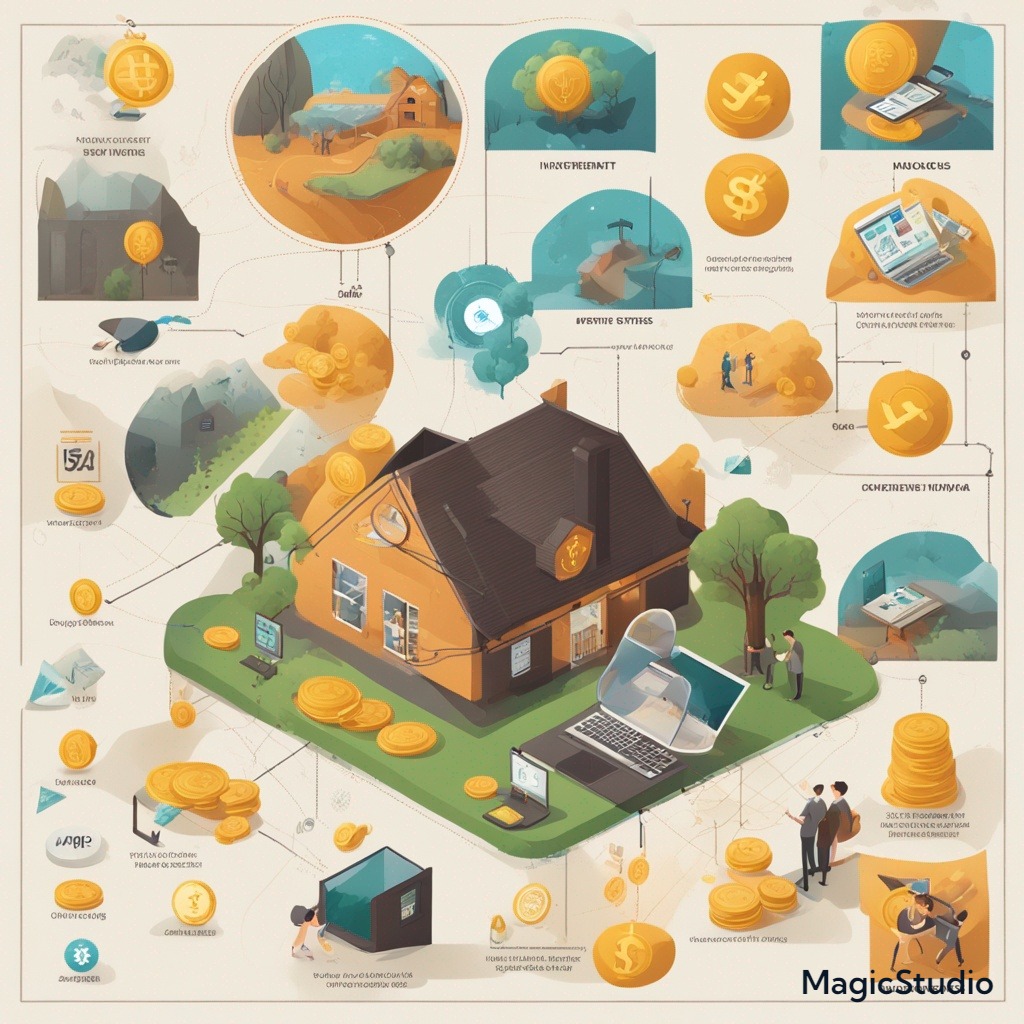Investing is a fundamental way to grow wealth, but it inherently involves both risks and rewards. Understanding these factors is crucial for making informed decisions that align with your financial goals. This blog will explore various investment types, highlighting their potential risks and rewards, empowering you to navigate the complex landscape of investing effectively.
1. Stocks
Rewards:
- Capital Appreciation: Historically, stocks have provided significant long-term growth. Investing in companies with strong fundamentals can lead to substantial capital gains.
- Dividends: Many companies pay dividends to shareholders, providing a regular income stream in addition to potential capital appreciation.
Risks:
- Market Volatility: Stock prices can fluctuate dramatically due to market conditions, economic factors, or company performance. This volatility can result in significant losses, especially for short-term investors.
- Company-Specific Risks: Individual stocks are susceptible to risks related to the company’s financial health, management decisions, and industry changes.
Actionable Tip: Diversify your stock investments across various sectors to mitigate risks associated with individual companies.
2. Bonds
Rewards:
- Steady Income: Bonds typically provide regular interest payments, making them a reliable source of income for investors.
- Lower Volatility: Compared to stocks, bonds are generally less volatile, offering a safer investment option during economic downturns.
Risks:
- Interest Rate Risk: When interest rates rise, bond prices tend to fall. Investors may face losses if they need to sell bonds before maturity.
- Credit Risk: The risk that a bond issuer may default on payments can affect the bond’s value. Higher-yielding bonds often carry greater credit risk.
Actionable Tip: Consider a mix of government and corporate bonds to balance risk and reward while securing a steady income.
3. Real Estate
Rewards:
- Appreciation: Real estate often appreciates over time, providing potential for significant capital gains.
- Passive Income: Rental properties can generate a steady income stream, and real estate investment trusts (REITs) allow investors to earn without the hassles of property management.
Risks:
- Market Fluctuations: Real estate values can be affected by economic conditions, local market dynamics, and interest rates.
- Illiquidity: Selling real estate can take time and may not yield immediate cash, unlike stocks or bonds.
Actionable Tip: Conduct thorough market research and property inspections to minimize risks and maximize rewards in real estate investing.
4. Mutual Funds and ETFs
Rewards:
- Diversification: Mutual funds and exchange-traded funds (ETFs) allow investors to diversify their portfolios across various assets, reducing overall risk.
- Professional Management: Fund managers handle investment decisions, making these options ideal for those who prefer a hands-off approach.
Risks:
- Management Fees: Fees can eat into profits, particularly in actively managed funds.
- Market Risk: While diversification reduces risk, mutual funds and ETFs are still subject to market volatility.
Actionable Tip: Review a fund’s expense ratio and historical performance before investing to ensure it aligns with your financial goals.
5. Cryptocurrencies
Rewards:
- High Potential Returns: Cryptocurrencies have shown the potential for explosive growth, with some investors seeing significant returns in a short time.
- Decentralization: Many cryptocurrencies operate on decentralized networks, providing a hedge against traditional financial systems.
Risks:
- Extreme Volatility: Cryptocurrency prices can swing wildly, leading to significant losses.
- Regulatory Risks: Changes in regulations can impact the value and legality of certain cryptocurrencies, introducing additional risks.
Actionable Tip: Invest only what you can afford to lose in cryptocurrencies, and stay informed about regulatory developments.
6. Commodities
Rewards:
- Inflation Hedge: Commodities like gold and oil can serve as a hedge against inflation, retaining value when currency depreciates.
- Global Demand: Investments in commodities can benefit from global demand, especially in emerging markets.
Risks:
- Price Volatility: Commodity prices can be influenced by geopolitical events, weather conditions, and changes in supply and demand.
- Storage Costs: Physical commodities may incur additional costs for storage and insurance.
Actionable Tip: Consider commodity ETFs or mutual funds to gain exposure to this asset class without the need for physical storage.
7. Peer-to-Peer Lending
Rewards:
- Higher Returns: Peer-to-peer lending can offer higher returns compared to traditional savings accounts and bonds.
- Diversification: Investing in various loans can help spread risk across different borrowers.
Risks:
- Default Risk: Borrowers may default on their loans, leading to potential losses for investors.
- Lack of Regulation: Peer-to-peer lending platforms may not have the same regulatory protections as traditional banks.
Actionable Tip: Diversify across multiple loans and assess borrower credit ratings to minimize default risks.
